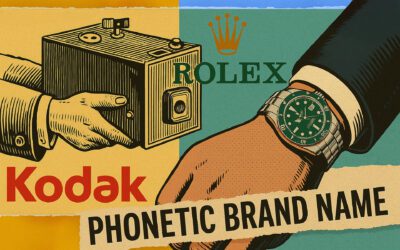The more your brand enables entices, and enriches customers, evoking their positive emotions and building their trust, love, and respect, the more highly admired it will be. An admired brand offers the greatest opportunity for enduring and profitable growth. When your brand is seen as lacking in even one of the three components of brand admiration, it will not be regarded as strongly admired. Apple sets the standard for brand admiration. It is clearly one of the most successful brands in recent history and it has become an admired brand by providing benefits that enable, entice, and enrich customers.
First, Apple is a clear leader in providing enablement benefits. Its technology, while not simple, makes learning and using Apple products easy. Apple’s famous one-touch solution and intuitive interface took what was otherwise an intimidating product category and made it user-friendly. Apple products “speak” to one another by virtue of their common operating system, making it easy for consumers to move seamlessly from one Apple product (e.g., a Mac) to another (e.g., an iPhone).
Second, Apple products are different from other technological products in their enticement benefits—specifically, through their design. Indeed, for Steve Jobs, visual design elements were on equal footing with technological advances in product development. The design of the buttons and screen and even the partially bitten apple logo itself makes customers gravitate toward Apple’s products. The visual simplicity and clean lines of Apple retail stores make for a warm and inviting environment where customers can play with any Apple product on the market.
Finally, Apple offers strong enrichment benefits. It speaks to consumers’ sense of self, asking them to Think different. Apple products were a status marker at one time, with people defining themselves as Mac, rather than PC, users. Users saw themselves as cool, and they felt proud of being Apple fans. Mac users felt more open-minded, younger, and hipper. Apple’s Think different campaign showcased iconoclastic thinkers (e.g., Mahatma Gandhi, Albert Einstein, Muhammad Ali, and John Lennon). It inspired consumers to think that they, too, could one day change the world. No other products have become so embedded and respected in every aspect of our daily lives as have Apple products.
Nonadmired Brands
Customers consider non-admired brands differently. These brands might be called decent, noble, boring, confusing, faddish, pompous, or even despised. These brands are lacking in their ability to offer one or more of the enablement, enticement, and enrichment benefits. They just can’t command the trust, love, and respect that admired brands do. Despised brands are the opposite of admired ones. Customers aren’t just indifferent to them; they actively avoid them or speak poorly of them. We’re not suggesting that a brand that’s not admired can’t be profitable. Even a despised brand can be profitable in the short term with great manufacturing and other operational efficiencies, particularly if customers have no other choice but to buy it. But it’s unlikely to survive the test of time, grow into new markets, and have strong equity unless it delivers on the things that are important to customers and make them happy.
Key Takeaways
1. Across highly diverse industries, admired brands are similar in their ability to provide enabling, enticing, and enriching benefits that yield positive customer emotions and build brand trust, love, and esteem.
2. Such brands have been able to build, strengthen, and leverage their admiration over the long term by their continued efforts to best themselves and their competitors in the benefits (and hence value) they provide to customers.
3. Benefits that enable customers to solve their problems and conserve their scarce resources leave customers feeling
empowered, in control, secure, confident, and relieved. Customers trust brands that they can consistently rely on to solve their problems and conserve their resources.
Benefits that entice customers stimulate their senses, their minds, and/or their hearts. The brand’s benefits leave customers feeling gratified, engaged, entertained, upbeat, and/or warm-hearted. The more the brand provides these benefits, the more customers will come to love the brand.
Benefits that enrich customers respect their beliefs and hopes for a better future. They can also symbolize aspects of who one is, the status or respect one commands from others, and the groups of which one is a part. The brand’s benefits make customers feel inspired, proud, connected, validated, and influential. Customers respect brands whose beliefs and hopes are congruent with their own. They respect brands that help them connect with others who support them.
Brands that have emphasized these benefits relentlessly over time have managed to thrive over decades, generations, and even a century or more.
What About Your Brand?
1. Is your brand focused on a specific type of benefit, or on enablement, enticement, and enrichment benefits? How well is it performing on each benefit type? If you think it’s difficult to differentiate your brand from others, take heed of the lessons from brands such as Nike and Caterpillar.
2. If your brand is fully differentiated from competing brands, does this differentiation have anything to do with types of benefits and the emotions that result from their provision? How would your brand stack up relative to competitors if you tried to differentiate it with the 3Es in mind? (
Enablement Benefits, Enticement Benefits, Enrichment Benefits)
3. How would customers describe your brand? Is it admired? Is it faddish? Is it decent?
Paid, Earned, Shared, Owned: The PESO Media Mix That Builds Brands
Paid, earned, shared, and owned media make up the core mix of modern brand marketing. When these four channels work together, they create visibility, credibility, and long-term growth—helping small businesses and solopreneurs build stronger brands.



